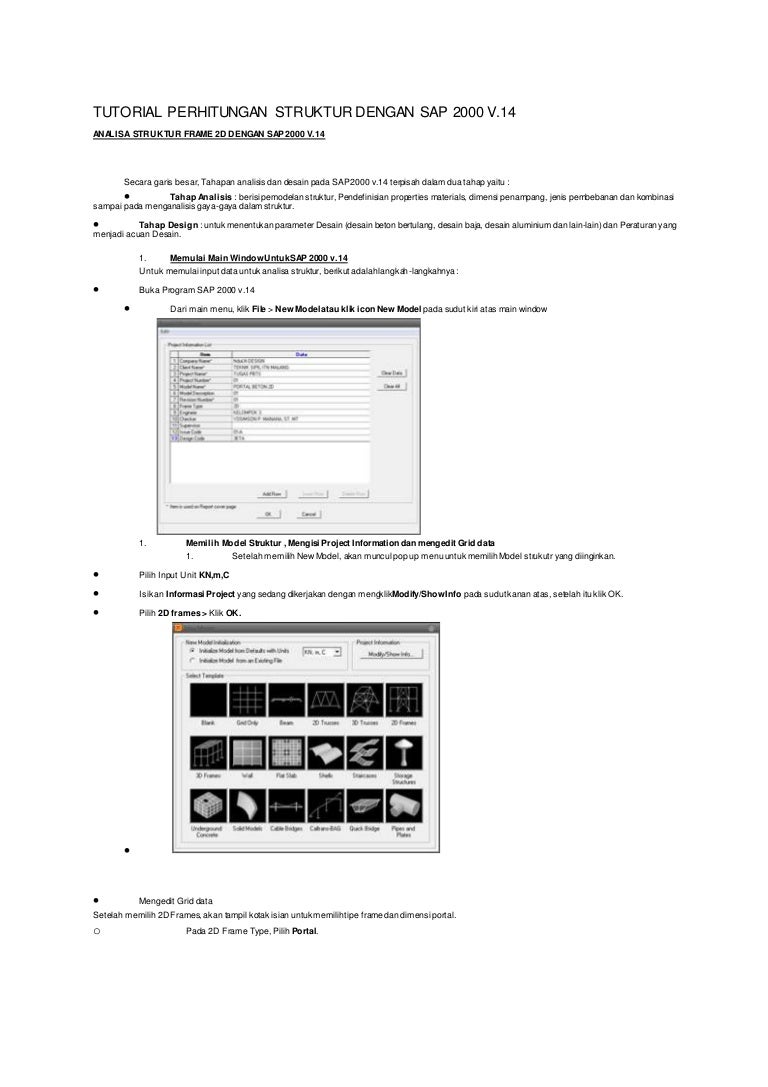

Click OK and theSave Model File As window willappear as shown below:SAP2000 creates about 40 temporary files whenyour run a model, so it is beneficial to choose aspecial folder to store the SAP2000 files. To change the properties of the framesection click on the Modify/Show Property.Ĭlick onRun Now button If the analysis is successful, the Analysis Complete window willappear and report the the analysis is complete. For most linear elastic statically loaded structures, only values forWeight per unit Volume and Modulus of Elasticity are required.Step 9: Define Frame Sections - To define the cross-sectionproperties of a structural element click on the Define menu located alongthe top the SAP2000 interface window, then click on Section Properties,then Frame Sections., and then the Frame Properties window will appear as shown below:The defaultFrame Section label is FSEC1. Now we have a material namedA992Fy50 that has no weight per volume.For this example problem, the default values for the Mass per unit Volume,Modulus of elasticity, Poisson's ratio, and the Coefficient of Thermal Expansion canbe used.

Click OK to return to the Define Materials window andthan click OK again. Button.The Material Property Data window will appear.Change thevalue in the Weight per unit Volume input field to zero. In this example, select theA992Fy50 (steel with a yield stress of 50 ksi)material and click on the Modify/Show Material. On this menuyou can change the properties of materials. In thisexample, the structure is a truss, which by definition has no moment capacity at each joint.To release the moment capacity, click on the check boxes that are associated with the Moment22, Moment 33, and Torsion. Next click on the Assign menu,then select Frame, then Releases/PartialFixity., and then andAssing FrameReleases and Partial Fixity window will appear. Therefore, to analyze a truss structure we shouldconvert each joint from a fixed connection to a pin connection.To ensure that every jointin the structure is pin connected, select all the members by clicking the SelectAll button on the left-side tool bar.

The AnalysisOptions menu will appear as follows:To restrict SAP2000 to variables in the x-z plane, selectthe Plane Frame button,uncheck the RY box, andclick OK. The truss structure is now ready for analysis.Step 7: Release Internal Moments at Joints - SAP2000assumes that all structures are frames. To limit analysis tovariables in the x-z plane click on the Analyze menu located along thetop the SAP2000 interface window and then click on Set Analysis Options. For this problem thejoint locations are shown below:Step 3: Draw Frame Elements - To define eachframe element, select the Draw Frame Element buttononthe left tool bar.Įnter -3000 in the Forces Global Z input field andclick OK.The forces should be should be displayed on the truss (properdirection and magnitude) in the SAP2000 interface window.Step 6: Set Analysis Options - Inthis example, the truss structure is modeled in the x-z plane. Click on grid intersection lines to define joints. To adjust the views, select an window and click on the appropriate view buttonlocated along the top edge of the interface window.Click on the window label and delete theleft-hand side window so that you have a general3D view and then click on the xzbutton on the top bar to see a 2D view of thestructure.Step 2: Locate Truss Joints -To define the jointlocations, select the Draw Special Joint button on theleft side tool bar. Only oney-direction grid line is necessary for 2D problems.When you click OK, SAP2000 generates the grids lines you have justdefined and shows you the grid system in the SAP2000 interface window.By default SAP2000 show two views of your problem, typically a 3-D view and an x-yplane view. The number of grid line in the x and z-directions are 5 and 2,respectively.


 0 kommentar(er)
0 kommentar(er)
